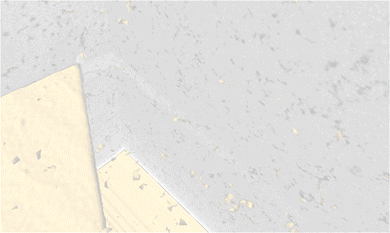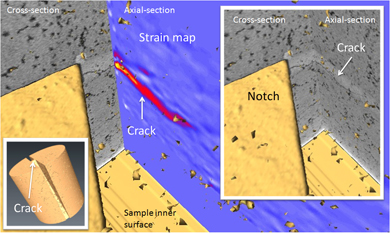LaVision's DVC successfully used to observe crack propagation mechanisms in nuclear graphite
Monday, 20. June 2011

In collaboration with the University of Manchester, Prof James Marrow and his team at Oxford University have utilized LaVision's Digital Volume Correlation (DVC) software to observe crack propagation mechanisms in a quasi-brittle material. DVC provides better discrimination of the crack, and allows measurement of the crack opening displacements. Characterisation of the displacement field around the crack will be used to obtain the elastic strain energy release rate with crack propagation, and to study inelastic damage processes. One of the project aims is to determine the criterion for crack propagation, and DVC is proving to be an invaluable tool in working towards achieving that.
The figure illustrates one section of a "chevron-notch" fracture specimen of nuclear graphite (20 mm diameter). In the results shown, DVC has been used to calculate the deformation and strain between volume images of the specimen in the unloaded (uncracked) reference state, and the volume image of the specimen in the loaded state (including crack). The data illustrates that a stable crack has been propagated from the tip of the chevron.
The work presented is courtesy of Prof James Marrow (Oxford University), Dr Mahmoud Mostafavi (The University of Manchester), and Sam MacDonald (The University of Manchester). Funding for the project comes from EdF Energy and the Oxford Martin School.


